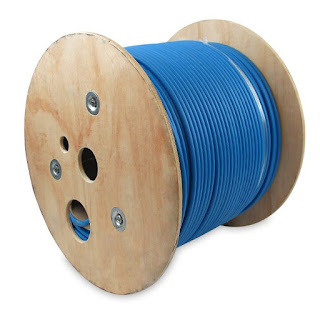Cat6 Ethernet Cables: Ideal for Any Household
Why would anyone talk about Ethernet cables in 2019? It sounds primitive. But they are widely used and are always improving. Cat6 Ethernet cables are the current standard everywhere. All the evolving Ethernet cables are backwards compatible, so you don't have to worry about it not working with your device. Cat6 is a great mid-level cable, compared to Cat5 and Cat7. Most households can use Cat5 depending on the requirements. If you are looking to install in-house wiring, a little extra future proofing always helps. Let us take a deeper look into why the Cat6 Ethernet cable is here to stay and all the ways that you can use one.
When the Wi-Fi is Dead
Yes, your Wi-Fi doesn't always work. The Wi-Fi signal struggles to pass through concrete walls and glass doors. You might have noticed that your house has dead zones, or some areas get a weak signal. That is not at all fun when you are streaming a thriller movie and stream has to buffer mid-scream. You could simply plug in an Ethernet cable right into your TV (yes a lot of them have Ethernet ports) and never have to wait to be terrified!
To Create a Mesh Wi-Fi Network
These dead zones that we talked about, are easy to take care of by a slightly new trick called mesh network. You get Wi-Fi via a device called a router, which has Ethernet ports. An Ethernet cable connects it to the modem. Nowadays, you can get a single device, which works as a modem and a router as well. The mesh network is a network of small router nodes all over your house. You can get plenty of mesh network router and nodes bundles in the market. Simply connect the main device to your router with a Cat6 Ethernet cable, and then the companion mobile app will guide you through the setup of the nodes. It usually takes about 10 minutes.
These devices are Gigabit Internet compatible, which is why the Cat6 cable is the best option.
Goodbye, dead zones and welcome to great connectivity no matter where you are in the house!
Gaming purposes
Let's be real. No one wants their screen to freeze when they're playing Mortal Combat. The easiest solution is to plug in an Ethernet cable for high speed and smooth animation! After all, slow internet can potentially kill your characters.
Video editing and uploading
Anyone can make videos, edit them and post on the internet on any video publishing sites. Generally, shooting equipment nowadays, even if it is a phone camera, shoots in high resolution. So your video is that much more difficult to upload over Wi-Fi. No matter what, Wi-Fi is slower than a direct cable plugged into your computer. So do yourself a favor and plug in a Cat6 Ethernet cable to move things along much faster. The Ethernet cable also means your Wi-Fi won't accidentally disconnect and you are less likely to see an 'Uploading Failed' alert.
These are only some of the many ways that you can use an Ethernet cable in your daily life. Of course, if you have a business that relies heavily on the internet, then it is more practical for you to have your computer and those of your staff connected via an Ethernet cable. The servers that help run your business should also use bulk Cat6 cables because of that server powers all of your computers. Even if one of the cables wears out, it can cause a lot of harm to your workflow.
Another situation where bulk Cat6 cable is useful is when you are building a data center. Companies need more and more data centers as they expand. Even small companies need to have data centers for the proper functioning of the workplace internet.
Concluding:
Wireless technology is great, it has been the force behind many technological advancements, but we are nowhere close to getting rid of wires just yet. So we may as well make the best use of them right now.
This Article is Originally posted here; https://www.sooperarticles.com/shopping-articles/electronics-articles/cat6-ethernet-cables-ideal-any-household-1726279.html
If you found this article useful, here are some other articles that may be of interest.




Comments
Post a Comment